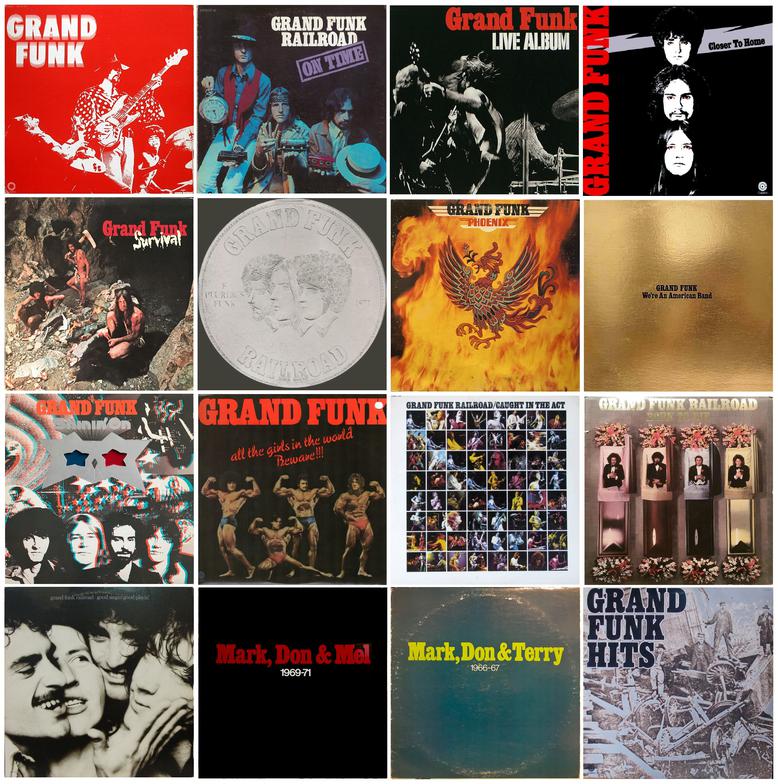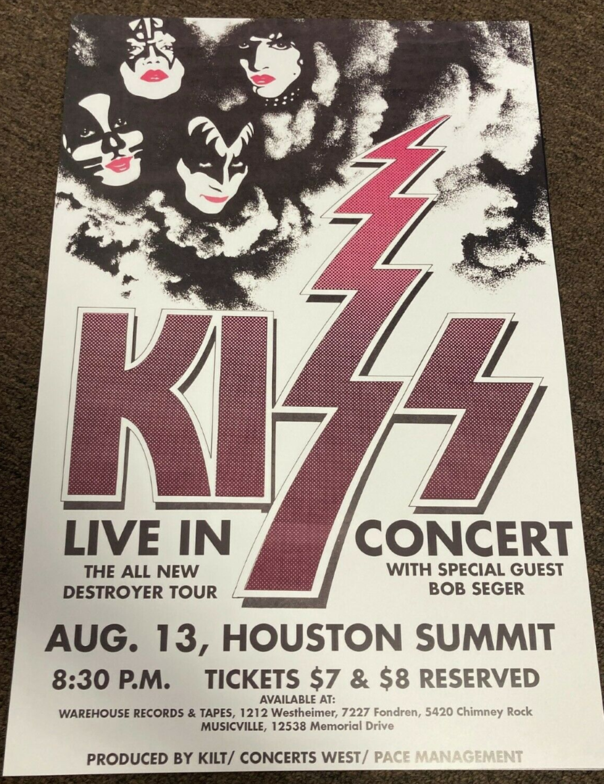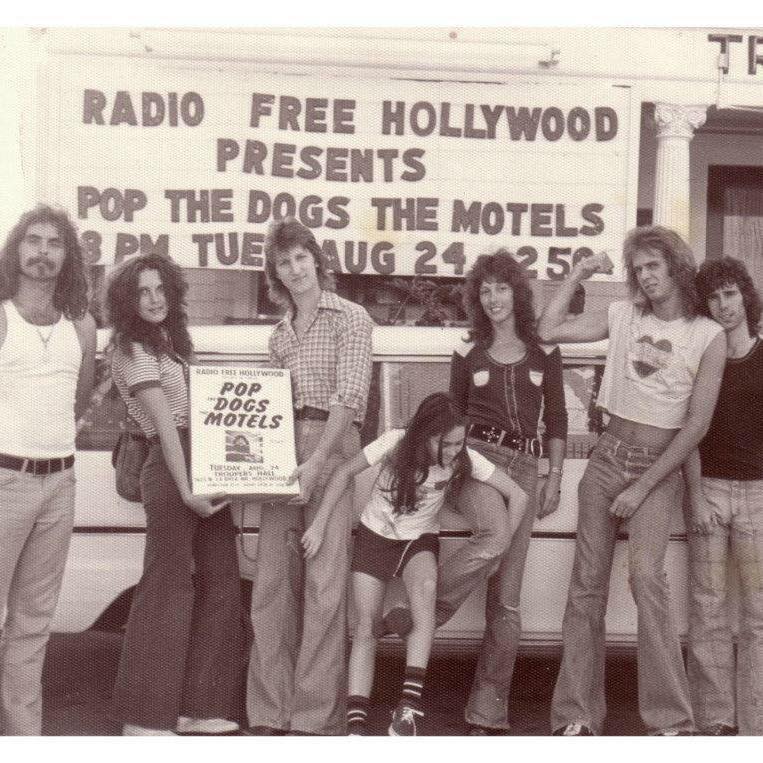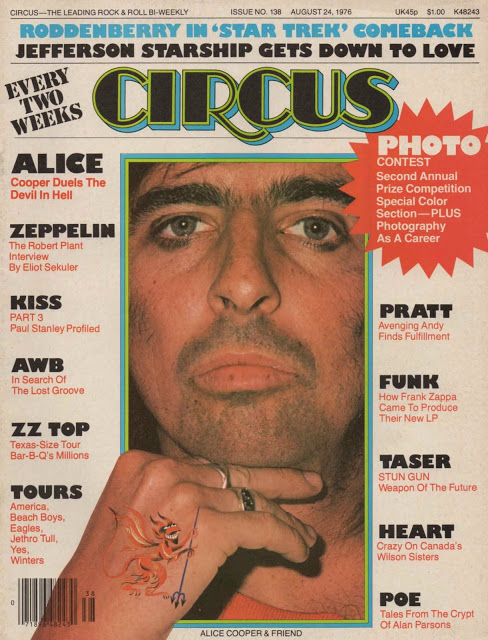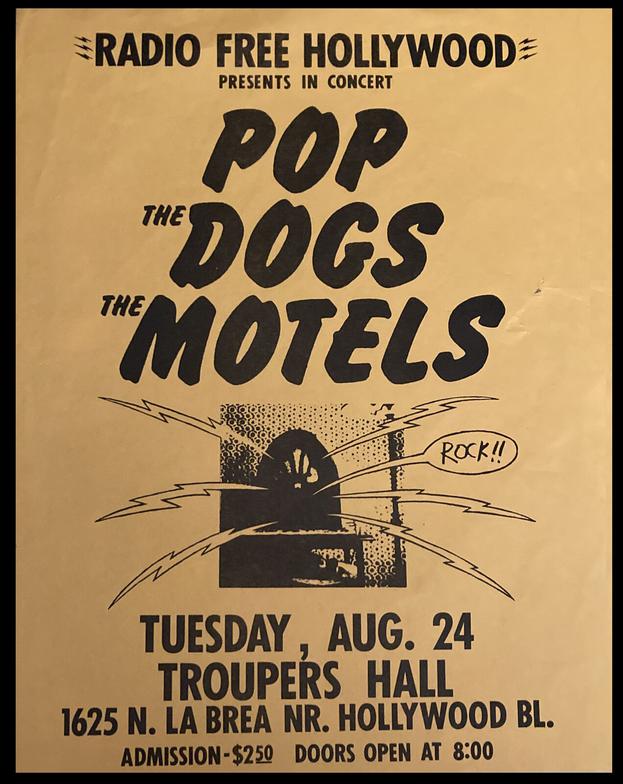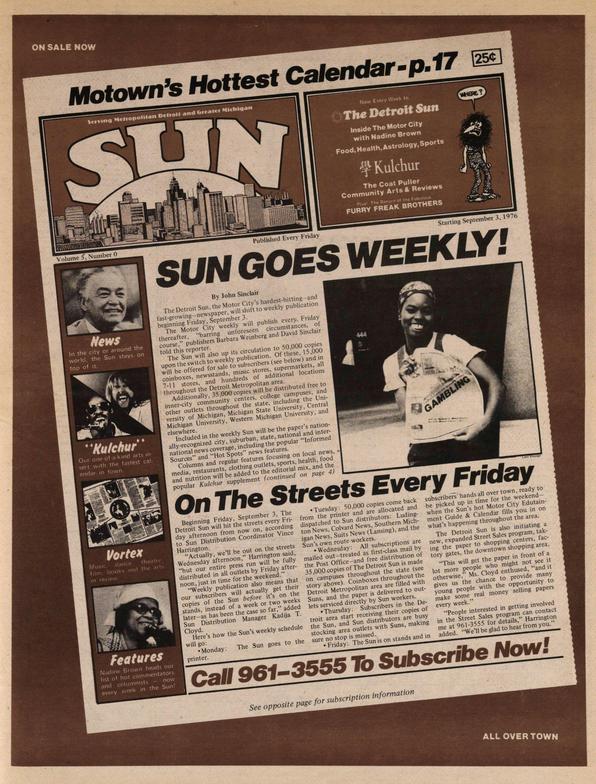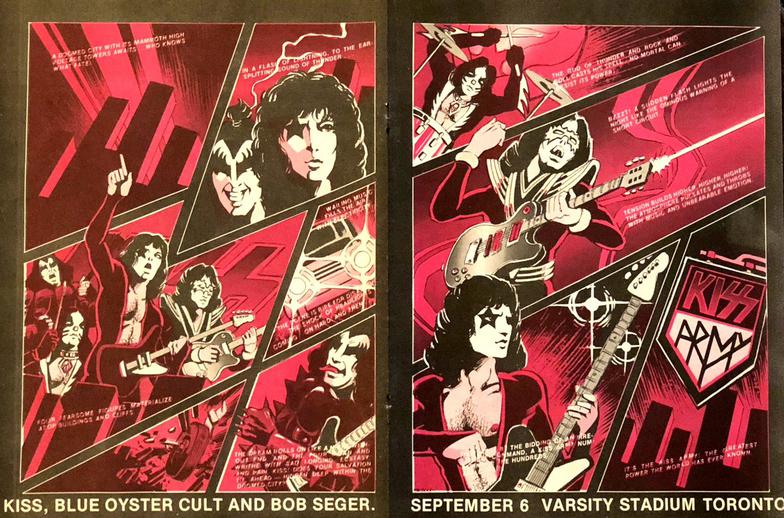Splatt Gallery
Double click here to add text.
Splatt Gallery's History of Michigan Music Posters
Volume Twelve - 1976 - Page Nine
***********************************************************
With the demise of Grand Funk Railroad, we have gathered the album cover art of their thirteen albums, plus three Greatest Hits albums released during the course of their eight-year recording history, from 1969 through 1976.
The cover art for their first seven albums were done by Capitol Records staff artists under some direction from manager Terry Knight. Beginning with “We’re An American Band”, all of the following albums, except the final “Good Singin’ Good Playin’” had cover art created by the great Detroit-born photographer Lynn Goldsmith, whom as we’ve described in detail in earlier chapters, became the band’s co-manager among many other achievements and career highlights.
Here are a handful of familiar album covers that are among the hundreds that use the photographs of Lynn Goldsmith.
The unmodified ad for Grand Funk Railroad’s “Good Singin’ Good Playin’” which was released on August 9, 1976. The original ad shared space with the release of the second album by the band Angel.
Two years later, Frank Zappa wrote the song “Punky’s Whips” the subject of which was Angel’s lead guitar player Punky Meadows, which drummer Terry Bozzio performed with great relish. Meadows took it well, as he describes sitting in with Zappa’s group in concert:
“I thought it was cool, Frank is very satirical, so you can’t have a thin skin. I found it kind of flattering. Around the time he wrote the song, he was playing in L.A. He asked if I’d be willing to come onstage in my Angel costume and play with him on the song. I went to the concert, the curtain goes up, and there’s this giant publicity photograph of me doing this pucker kind of thing. It was like Dean Martin’s roast or something. Afterwards, Frank asked me to his place to drink some beer and play some tunes.”
Frank Zappa – Punky’s Whips (1978)
https://www.youtube.com/watch?v=2wvzL7Kze_0
A pretty cool full-page MCA Records ad in the July 31, 1976 issue of Billboard magazine for Grand Funk Railroad’s album “Good Singin’ Good Playin’” which was released on August 9, 1976 and the preceding first single “Can You Do It”.
Producer Frank Zappa also contributed guitar on the track "Out to Get You".
Grand Funk Railroad – Can You Do It (1976)
https://www.youtube.com/watch?v=06EfC9ygZwI
Grand Funk Railroad – Out to Get You (1976)
https://www.youtube.com/watch?v=0cPJxtWDGZI
A non-descript ad for the Mutants at the 24 Karat Lounge in Detroit, Michigan, August 9-10, 1976, but we’ll take what we can find in this post-Grande Ballroom/pre-Bookie’s period which seems to be the murkiest, least-documented era of Michigan music history, hence one of the most fascinating to us.
Selling used cars Detroit-style, with former Detroit Lions football star Mel Farr, seen in the clip below, and with Tae Kwon Do master instructor Bill (Black Belt) Scott in an ad from the August 12, 1976 issue of the SUN newspaper.
Mel Farr Superstar Commercial
https://www.youtube.com/watch?v=aF3n_PA1-1w
Poster for Parliament-Funkadelic with Bootsy’s Rubber Band in Seattle, Washington on August 12, 1976.
A poster with Bob Seger & the Silver Bullet Band opening for KISS in Houston, Texas on August 13, 1976. The striking design was used for a number of shows on the KISS tour and is commonly bootlegged.
A second poster with Bob Seger & the Silver Bullet Band opening for KISS in Houston, Texas on August 13, 1976.
An ad in the Los Angeles Free Press for a concert by Parliament at the Shrine Auditorium on August 14, 1976.
A full-page Casablanca Records ad in the August 14, 1976 issue of Billboard magazine.
An ad for the Jackson County Fair and Petunia Festival in Jackson, Michigan with an appearance by Bob Seger & the Silver Bullet Band, plus Frijid Pink, on August 14, 1976.
A second ad for Bob Seger & the Silver Bullet Band with Frijid Pink at the Jackson County Fair and Petunia Festival in Jackson, Michigan on August 14, 1976. This seems to be Frijid Pink’s only known appearance in 1976, their third year of only a single show per year, since the release of their fourth, and final, album in early 1974.
A full-page Discount Records ad in the August 15, 1976 issue of the SUN newspaper in Detroit, Michigan for Bob Seger’s “Live Bullet” album.
The Temptations released their 22nd studio album “The Temptations Do The Temptations” on August 16, 1976, it would briefly be their final Motown album, they would join Atlantic Records for their next two albums, returning to Motown in 1980.
Of the 22 albums over the 12 years from 1964 to 1976, fourteen of them reached #1 on the Billboard R&B Albums chart, and seven of them made the Top Ten on the Billboard 200 albums chart.
David Ruffin was in the group for the first seven records, before he was replaced by Dennis Edwards. Founding members Eddie Kendricks and Paul Williams lasted through 14 albums, both leaving the group in 1971. Producer Norman Whitfield, credited with creating the subgenre “psychedelic soul”, was on board for the first 18 albums, leaving Motown in 1975.
Also, during this period, the group released four live albums, three soundtrack albums, and three Greatest Hits packages.
The Temptations released their 22nd studio album “The Temptations Do The Temptations” on August 16, 1976, it would briefly be their final Motown album, they would join Atlantic Records for their next two albums, returning to Motown in 1980.
Of the 22 albums over the 12 years from 1964 to 1976, fourteen of them reached #1 on the Billboard R&B Albums chart, and seven of them made the Top Ten on the Billboard 200 albums chart.
David Ruffin was in the group for the first seven records, before he was replaced by Dennis Edwards. Founding members Eddie Kendricks and Paul Williams lasted through 14 albums, both leaving the group in 1971. Producer Norman Whitfield, credited with creating the subgenre “psychedelic soul”, was on board for the first 18 albums, leaving Motown in 1975.
Also, during this period, the group released four live albums, three soundtrack albums, and three Greatest Hits packages.
A full-page Atlantic Records ad for albums by Yes, and solo albums from the band members, along with a tour schedule that included at least two, maybe three, shows at Cobo Arena in Detroit, Michigan, August 17-19, 1976.
An ad for Arthur Prysock at Murphy’s Cocktail Lounge in Detroit, Michigan, August 19-22, 1976, below an ad for Tae Kwon Do master instructor, and Lincoln-Mercury car salesman, Bill (Black Belt) Scott.
Arthur Prysock - Lowenbrau Commercial
https://www.youtube.com/watch?v=EueQdYyZpUs
A fantastic two-page ad by Roger Shepherd for KISS in Anaheim, California on August 20, 1976, with Michigan’s two biggest touring rock acts, Bob Seger & the Silver Bullet Band and Ted Nugent, crossing paths once again.
Poster by Freddie Brooks, Michigan Music Promotion, for Sonic’s Rendezvous Band at Second Chance in Ann Arbor, Michigan on August 24, 1976. Photo by Jo Ann Uhelszki.
The Dogs rock and roll band from Lansing, Michigan decided to try their luck in Los Angeles, California, but when they arrived they soon found out the famous clubs, the Roxy, the Whisky and the Starwood were only booking bands that had been signed to record contracts. The only other alternative was to play covers of the hits of the day in countless bars, clubs, pubs, and discos.
Two other transplant bands, Pop from Boston and the Motels from Berkeley, California, also discovered that there were no places to play original material. The three groups pooled their resources to stage their own show at the rented Trouper’s Hall in Hollywood on August 24, 1976. It cost them $900 for the hall and the beer, they drew a crowd of about 400 people and ended up only about $90 in the hole.
But the name they had chosen for the event “Radio Free Hollywood” caught on and became a rallying cry for a small but dedicated group of LA rock fans who were fed up with rock ‘n’ roll business as usual, eventually convincing the Whisky and the Starwood that there was an audience for local, unsigned groups, as well as spawning a number of new clubs, such as Masque, Madame Wong’s and Club 88 that formed the basis of a new scene for LA punk rock.
A photo of members of the “Radio Free Hollywood” clan, including the Dogs rock and roll band, holding the poster and standing in front of the marquee for their show at Trouper’s Hall in Hollywood, California on August 24, 1976.
Alice Cooper on the cover of the August 24, 1976 issue of Circus magazine. Sidelined from touring by a bout of anemia, he was keeping himself in the public eye with an August 6th broadcast of a performance on the Midnight Special TV show, which had been taped on July 12th, and appearing on stage as part of Elton John’s encore at Madison Square Garden in New York City on August 17th.
Poster for a Barry Manilow tour with two Michigan shows, at the Meadow Brook in Rochester Hills, Michigan on August 25, 1976 and back again on the 27th.
An excellent poster by Azure Blue for the Mosquito Dam Jam People’s Festival in Cortland, Ohio on August 28, 1976 with Bob Seger & the Silver Bullet Band, REO Speedwagon and Starz opening Blue Oyster Cult.
BOC’s newest single “(Don't Fear) The Reaper” had just been released a month before, it would eventually peak at #12 on the Billboard Hot 100 chart, becoming their highest-charting single, but its impact out-distanced all eleven records above it, and a Saturday Night Live sketch written by and starring actor Will Ferrell, twenty-four years later, made “More Cowbell” a national catchphrase. Rolling Stone magazine named "(Don't Fear) The Reaper" the song of the year for 1976.
Blue Oyster Cult - (Don't Fear) The Reaper (1976)
https://www.youtube.com/watch?v=Dy4HA3vUv2c
Saturday Night Live – More Cowbell (2000)
https://www.youtube.com/watch?v=cVsQLlk-T0s
Newspaper ad for Sly & the Family Stone at the Masonic Auditorium in Detroit, Michigan on August 28, 1976. It was the band’s 19th, and final, Michigan appearance.
An ad for Rush at the Glacier Dome in Traverse City, Michigan on August 28, 1976.
Ted Nugent made his first overseas trip, playing eleven shows in six countries, beginning with a slot at the Rock Circus festival in Rottweil, Germany on August 28, 1976. The next day he performed as the guest star from the USA at the Reading Festival in Reading, England.
Poster and program cover for the Reading Festival in England with an appearance by Ted Nugent on August 29, 1976.
Ted Nugent performed on the third night of the 16th annual Reading Rock festival in England on August 29, 1976. Nugent was only the third Michigan-related artist to perform at the British festival, following Yusef Lateef in 1967 and Commander Cody in 1973. It would be another 10 years until another Michigander would appear at the festival, of all people, it would be former Destroy All Monsters’ guitarist Larry Miller.
An ad in plaid for the one and only vintage-era Michigan appearance by the Bay City Rollers, at the Masonic Auditorium in Detroit on August 29, 1976.
An ad in plaid for the one and only vintage-era Michigan appearance by the Bay City Rollers, at the Masonic Auditorium in Detroit on August 29, 1976.
The September 1976 issue of CREEM magazine was the final issue with Lester Bangs as Senior Editor. His tenure was five years and three months, since the June 1971 issue.
Lester Bangs was with CREEM magazine in Michigan for a little over five years, from June 1971 through September 1976. His writing preceded him, his first piece for the magazine was a review of a Fugs album in the August 1970 issue. His first major story was “I Remember Ray”, a four-page story on Ray Charles in the October 1970 issue.
Most infamously, and perhaps the piece that got him hired, was a review of the Stooges’ “Funhouse” album, a sprawling piece spread over two issues, November and December 1970, that did not even mention the album until the second part.
The first issue with his name in the staff box was June 1971, memorable for having the only cover by artist Gary Grimshaw. Bangs’ story in that issue was a seven-page work of fiction titled “Psychotic Reactions and Carburetor Dung”. The title was also used as the title of a 1988 compilation of his work, edited by Greil Marcus.
Shown above are headlines and graphics from just some of the more than 400 articles that Bangs wrote for CREEM. Some favorites include a story on Black Sabbath titled “Bring Your Mother to the Gas Chamber”, a review of David Bowie’s “Diamond Dogs” album, called “Swan Dive into the Mung”, and “Death May Be Your Santa Claus”, a faux interview with Jimi Hendrix. You should be able to enlarge the above image and read many of the others.
Also shown above is his notorious praise for Lou Reed’s despised “Metal Music Machine” album, which Bangs called “The Greatest Album Ever Made – Just in Case You Ever Wondered”.
Bangs rose to the position of Senior Editor at CREEM in August 1975, the position he held until his final issue of September 1976, but he remained listed as a “Consulting Editor” for the next six issues.
Bangs moved to New York City to work for Punk! magazine. Later, he would form a band called Lester Bangs & the Delinquents An ad for their only album is shown in the upper right corner of our tribute collage.
Issue #12 of Goldmine magazine, out of Fraser, Michigan, with Michigan rocker Jack Scott on the cover, September-October, 1976. Featured inside the magazine was an ad for a new Jack Scott single “Country Witch”.
Jack Scott – Country Witch (1976)
https://www.youtube.com/watch?v=xKG5eNbR8H0
We did not think that there could ever be a record as freaky-deaky as Parliament’s “Mothership Connection”, but a mere nine months later, in September 1976, Parliament released “The Clones of Dr. Funkenstein”. The cover photograph by Ron Slenzak gave us a terrifying view of just what was going on INSIDE that mothership. And now we knew for sure that we would never leave.
Parliament – Dr. Funkenstein (1976)
https://www.youtube.com/watch?v=9GqGzp8TtEI
A full-page Casablanca Records ad for the Parliament album “The Clones of Dr. Funkenstein”, released in September 1976.
Producer Norman Whitfield left Motown Records to start his own label and soon after he found the opportunity to combine three goals, to establish the backing group for Undisputed Truth into their own band, to find a place for a new female singer that he had discovered, and to produce a film score. The three goals came together when he created the band Rose Royce for the movie “Car Wash”.
The movie was released on September 3, 1976, the soundtrack album won a Grammy Award and the title track hit #1 on both the Billboard Hot 100 and the Hot Soul Singles charts.
Rose Royce – Car Wash (1976)
https://www.youtube.com/watch?v=U3Qr6omvRVI
An ad in the September 3, 1976 issue of the SUN newspaper in Detroit, Michigan for the single “Precious Memories” by the Other Brothers, who were the sons of Motown saxophonist Thomas “Dr. Beans” Bowles. Released on the Renaissance ’76 label, which also released “River of Tears” by Singin' Sammy Ward.
The Other Brothers – Precious Memories (1976)
https://www.youtube.com/watch?v=9cESEEfRVao
A poster for the SUN newspaper in Detroit, Michigan announcing that the paper had become a weekly, with the September 4, 1976 issue.
The poster for the SUN newspaper in Detroit, Michigan announcing that the paper had become a weekly, with the September 4, 1976 issue, along with examples of their “Edutainment” series subscription form, featuring Detroit musicians Ralphe Armstrong, Norma Bell, and Charles Moore. Unfortunately, there would be only six more issues published before the SUN unexpectedly folded.
A poster with Bob Seger opening for KISS in Pittsburgh, Pennsylvania on September 4, 1976.
A great poster for Ron Banks & the Dramatics with Ronnie Dyson and 13th Floor at the Kiel Opera House in St. Louis, Missouri on September 5, 1976.
A full-page Warner/Curb Records’ ad promoting the third single from the album “Who Loves You” by the Four Seasons, with tour dates including two shows at the Pine Knob Music Theatre in Clarkston, Michigan, September 5-6, 1976. We have also inlaid the ad for a later Michigan show, on October 11th in Lansing, Michigan.
The group had multiple #1 hits in early Sixties and although they remained a popular live act, their record sales had been sputtering when they signed with Motown Records in 1972 with hopes of returning to the charts. Their two years with Motown were pretty fruitless and the company dropped them in 1974, letting Frankie Valli buy the rights to a song that had been recorded but never released called “My Eyes Adored You”.
Valli struck a deal with Private Stock Records, who wanted to release it as a Frankie Valli solo record rather than a Four Seasons group record. It hit #1 on the Billboard Hot 100 chart in March 1975, a second single “Swearin’ to God” peaked at #6. Valli’s success renewed interest in the Four Seasons, who signed with Warner Bros./Curb and released the 1975 album “Who Loves You”.
The title track rose up the charts, peaking at #3, just as Valli’s solo singles were dropping off. The second single, “December, 1963 (Oh, What a Night)” became the group’s first #1 single in eleven years. The resurgence of the Four Seasons as hit makers was not nostalgic, although the title “December 1963” might suggest it, rather the tempos and modern sound production suited the disco dancers, as Billboard magazine noted, "the flavor and fun of '60s rock with a disco feel”. The singles would also be released in extended remixes, making them club, as well as radio, favorites.
Poster by an unknown artist with Bob Seger opening for KISS and Blue Oyster Cult in Toronto, Ontario, Canada on September 6, 1976. Reported that Seger did not appear and was replaced by Artful Dodger.
A nicely-different two-page ad with Bob Seger & the Silver Bullet Band opening for Blue Oyster Cult and KISS in Toronto, Ontario, Canada on September 6, 1976. A story by John Laycock in The Windsor Star newspaper confirmed Seger’s cancellation:
“Good-Bye Bob – Toronto’s gossips were all atwit when Bob Seger was eliminated from this week’s Kiss concert in that city, and only a week before the show at that. Well, calm down; Seger wasn’t thrown off the stage. He had backed out of certain dates on the Kiss tour so he could complete his next album; Toronto was one, but the various agencies involved got confused. Or so says long-time manager Punch Andrews. Album is due in October, by the way.”
The cover of the Extra CREEM section of the September 1976 issue for the feature story on the movie “The Demon Lover”, created by Michigan’s Dan Jackson and, from the early days of the Detroit Artists Workshop and “Detroit’s First Hippe”, Jerry Younkins.
Flyer/handbill for the movie “The Demon Lovers” by Dan Jackson and Jerry Younkins, and featuring Ted Nugent & the Amboy Dukes.
Volume Twelve - 1976 - continues - HERE


